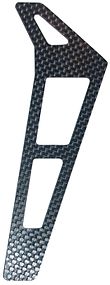Carbon fiber reinforced polymers (CFRPs) are advanced composite materials that combine the strength and stiffness of carbon fibers with the flexibility and versatility of polymers. These materials have revolutionized various industries due to their exceptional properties, making them a popular choice in aerospace, automotive, civil engineering, and sports equipment manufacturing.
Composition and Manufacturing Process
CFRPs are typically composed of carbon fibers, which are about 5 to 10 micrometers in diameter, embedded in a polymer matrix. The carbon fibers are produced through a complex manufacturing process that involves heating precursor materials like polyacrylonitrile (PAN) or pitch to high temperatures in an inert atmosphere. This process results in the alignment of carbon atoms into crystals along the fiber’s axis, creating a material with high strength, stiffness, and low weight.
Properties and Advantages
One of the key advantages of CFRPs is their exceptional strength-to-weight ratio. Carbon fibers exhibit high tensile strength, stiffness, and chemical resistance, making them ideal for applications where lightweight materials with superior mechanical properties are required. These composites also offer excellent fatigue resistance, thermal stability, and corrosion resistance compared to traditional materials like steel.
Applications
The versatility of CFRPs has led to their widespread use in various industries. In aerospace, carbon fiber composites are used to manufacture aircraft components, reducing weight while maintaining structural integrity. In automotive engineering, CFRPs are employed to produce lightweight body panels and chassis components, enhancing fuel efficiency and performance. Additionally, CFRPs find applications in civil engineering for strengthening structural elements like bridges and buildings.
Challenges and Future Developments
Despite their numerous benefits, CFRPs come with challenges such as high production costs and limited recyclability. Researchers are actively exploring methods to improve the sustainability of carbon fiber production and enhance recycling processes to reduce environmental impact. Moreover, ongoing research focuses on developing novel modifications and processing techniques to further enhance the properties of CFRPs for future applications.
In conclusion, carbon fiber reinforced polymers represent a cutting-edge class of materials that have transformed multiple industries by offering a unique combination of strength, lightness, and durability. As technology advances and research progresses, the potential for CFRPs to drive innovation across diverse sectors continues to expand, paving the way for more efficient and sustainable solutions in the future.
- Carbon-fiber-reinforced polymers – Wikipedia
Carbon-fiber-reinforced polymers, also known as carbon-fiber-reinforced plastics, are extremely strong and light fiber-reinforced plastics that contain carbon fibers. They are commonly used in aerospace, automotive, and other high-performance applications due to their high strength-to-weight ratio and stiffness. The composite material consists of two parts: a matrix, usually a thermosetting plastic, and a reinforcement, which is carbon fiber. CFRPs can be expensive to produce but offer exceptional performance. - Carbon fibers – Wikipedia
Carbon fibers, also known as carbon fibres, are fibers with high stiffness, tensile strength, and a high strength-to-weight ratio. When combined with a plastic resin and baked, they form carbon-fiber-reinforced polymer, which is extremely rigid and has a very high strength-to-weight ratio. These composite materials are used in various applications such as aircraft and spacecraft parts, racing car bodies, and sporting goods. - Carbon fiber reinforced plastic – Simple Wikipedia
Carbon fiber reinforced plastic (CFRP or CRP) is a very strong, light, and expensive composite material. It is commonly used in high-performance applications due to its exceptional strength-to-weight ratio and stiffness. - CFRP – Wikipedia
CFRP may refer to carbon-fiber-reinforced polymers, a material used in various industries for its exceptional strength-to-weight ratio and stiffness.
Citations:
[1] https://en.wikipedia.org/wiki/Carbon-fiber-reinforced_polymer
[2] https://en.wikipedia.org/wiki/Carbon-fiber-reinforced_polymers
[3] https://en.wikipedia.org/wiki/Carbon_fibers
[4] https://simple.wikipedia.org/wiki/Carbon_fiber_reinforced_plastic
[5] https://en.wikipedia.org/wiki/CFRP
Carbon fiber-reinforced polymers (American English), carbon-fibre-reinforced polymers (Commonwealth English), carbon-fiber-reinforced plastics, carbon-fiber reinforced-thermoplastic (CFRP, CRP, CFRTP), also known as carbon fiber, carbon composite, or just carbon, are extremely strong and light fiber-reinforced plastics that contain carbon fibers. CFRPs can be expensive to produce, but are commonly used wherever high strength-to-weight ratio and stiffness (rigidity) are required, such as aerospace, superstructures of ships, automotive, civil engineering, sports equipment, and an increasing number of consumer and technical applications.

The binding polymer is often a thermoset resin such as epoxy, but other thermoset or thermoplastic polymers, such as polyester, vinyl ester, or nylon, are sometimes used. The properties of the final CFRP product can be affected by the type of additives introduced to the binding matrix (resin). The most common additive is silica, but other additives such as rubber and carbon nanotubes can be used.
Carbon fiber is sometimes referred to as graphite-reinforced polymer or graphite fiber-reinforced polymer (GFRP is less common, as it clashes with glass-(fiber)-reinforced polymer).